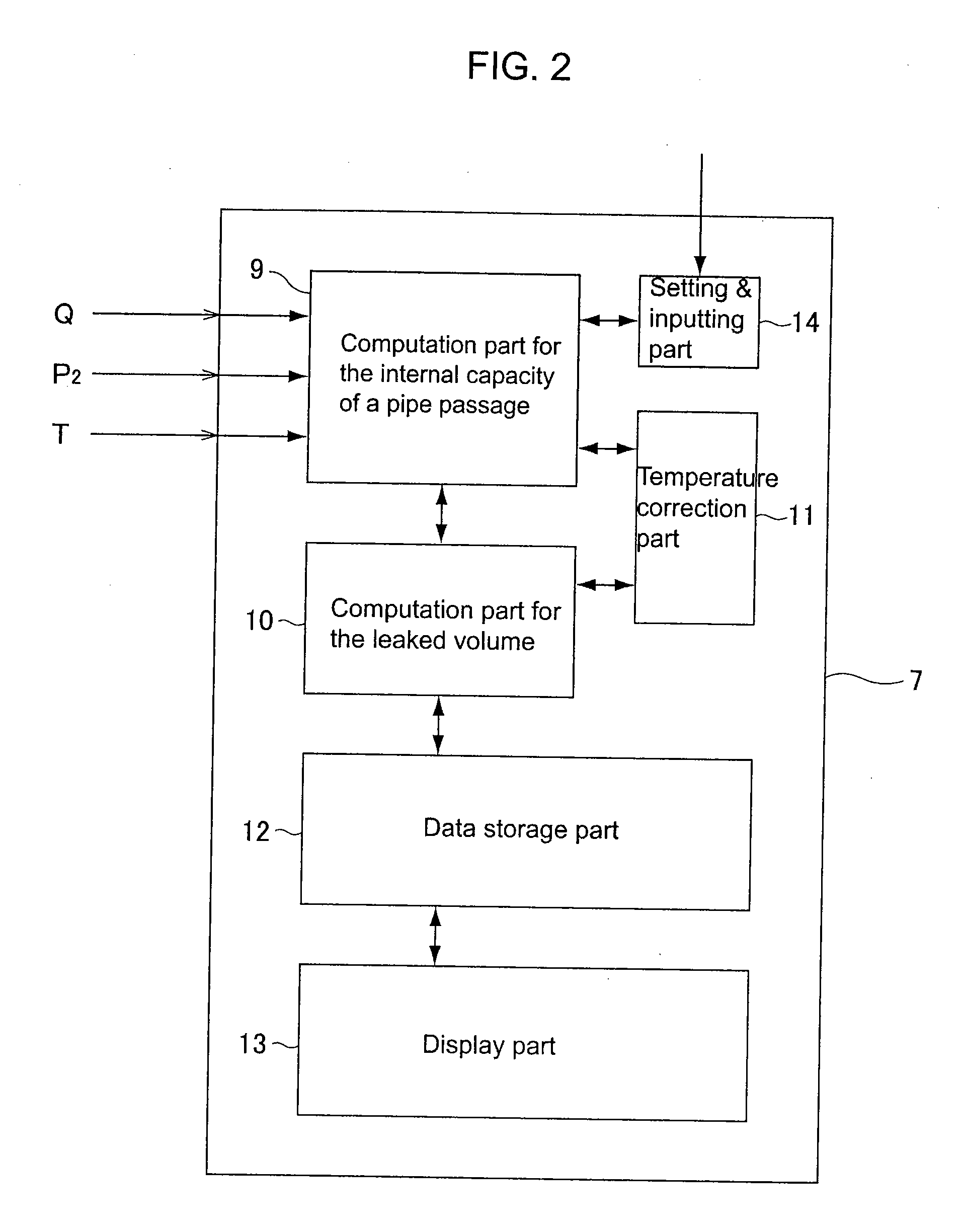Method and apparatus for testing leakage of pipe passage
- Summary
- Abstract
- Description
- Claims
- Application Information
AI Technical Summary
Benefits of technology
Problems solved by technology
Method used
Image
Examples
embodiment 1
[0090]FIG. 5 is a schematic diagram illustrating an embodiment of the method for testing leakage in accordance with the present invention. In FIG. 5, 1 designates a pressure adjustor, 2 and 18 designate pressure detectors (pressure transducers), 3 designates a flow rate measuring device, in this case a thermal type mass flow meter (a mass flow controller flow rate·N2 100 sccm), 5 designates a temperature detector (a thermostat), 6 designates a pipe passage undergoing testing, 7 designates a computation treatment apparatus (a data logger), 8 designates a N2 gas source, V1 and V2 designate metal diaphragm valves, 19 designates a leak sample (approx. 10−6˜10−5 Pa·m3), 20 designates a blind, 21 designates a stainless steel pipe of outer diameter 6.35 mm and inner diameter 4.35 mm, and 22 designates a stainless steel pipe of outer diameter 9.52 mm and inner diameter 7.52 mm.
[0091]First, in step (a), a flow rate setting is made for the flow rate measuring device (MFC) 3 in order that the ...
PUM
 Login to View More
Login to View More Abstract
Description
Claims
Application Information
 Login to View More
Login to View More - R&D
- Intellectual Property
- Life Sciences
- Materials
- Tech Scout
- Unparalleled Data Quality
- Higher Quality Content
- 60% Fewer Hallucinations
Browse by: Latest US Patents, China's latest patents, Technical Efficacy Thesaurus, Application Domain, Technology Topic, Popular Technical Reports.
© 2025 PatSnap. All rights reserved.Legal|Privacy policy|Modern Slavery Act Transparency Statement|Sitemap|About US| Contact US: help@patsnap.com



